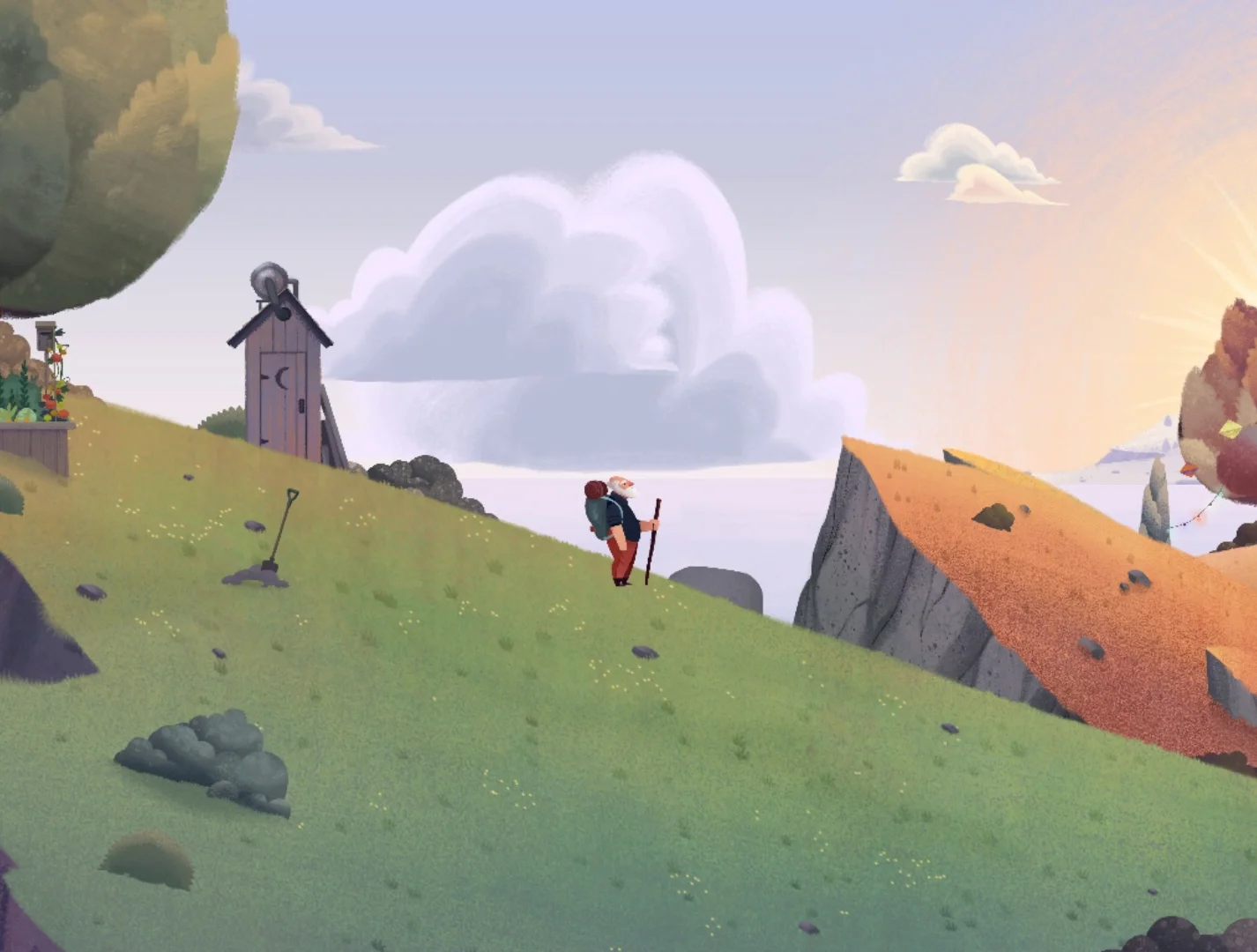Release Date: 18/05/2017
Played On: Win
Available On: Droid / iOS / Mac / NS / Win
Time Played: 1h
Progress: Completed
Developer: Broken Rules
Publisher: Broken Rules
It never ceases to amaze me just how many terrible ports are made of mobile games onto other systems. There are so many aspects of mobile design that differ immensely from desktop or console requirements, which rarely get adapted along with a port. Every now and then though, a game keeps it simple and gets it right.
Old Man's Journey is a touch screen game through and through, as its central mechanics consist of tapping/holding points on the screen and dragging them to other positions. It's simplistic and works well on touch devices, which is why I was excited to discover how well it ported to PC.
I find that the simpler a game's control scheme, the better it translates from one system to another. Often the best practice appears to be substituting a finger for a mouse pointer and keeping everything else the same. Problems arise with more complex gestures and multi-touch inputs, but when the original interface Is simple, it translates well to a mouse drive input.
Over time I've figured out that a mobile game ported to desktop doesn't have to automatically result in disaster. The same can be said about porting from desktop to mobile, as the same control related issues apply. How do you simplify the complexity of mouse and keyboard driven input, to a simple touch interface of gestures and binary inputs. We've all played some terrible mobile games with complex controls, but I doubt anyone sticks in there for very long.
The entire purpose of interfacing with Old Man's Journey is to create paths that he is able to travel along to reach his destination. It works as a screen-by-screen puzzle game, as each scene requires a complete solution to traverse to the next. The gimmick here is that you are tasked with manipulating the two dimensional landscape by pushing and pulling it across the screen. By shifting everything about, you can create smooth connections for the old man to move from one plane to another.
It's kind of like a parallax system, as each two dimensional plane relates in exponential ways to its foreground and background relatives. Of course, while this primary mechanic starts simply, the complexity soon ramps up to scenes with multiple steps. One move might take the old man to the other side of the screen, followed by another move that continues his path into the foreground.
Eventually there are multiple obstacles to configure, like sheep who will block the old man's progress. Thus, more shifts and configurations are required to move the sheep out of the way before the old man can safely pass.
There isn't a lot else to the game, but I still enjoyed it a lot. This is definitely one of those more contemplative titles that allows you as much time and patience as you desire. Each act of the game is broken up by the old man finding a place to sit down and reminisce about his life and his youth. These moments are also a great time for the player to drop the complex intellectual equations of puzzle solving, and enjoy some beautifully painted art.
In fact, the real charm of Old Man's Journey has little to do with its mechanics and leans heavily on aesthetic and a quiet narrative. At least, that's what grabbed my attention the most, as the whole game has a hand-drawn look that brings colour and life to the otherwise flat landscape.
The characters that appear in the game along with the old man himself, are wonderful renditions of people who appear with wisdom behind their eyes. I know I'm a sucker for the artistic side of gaming, but this is a great example of how important it can be to take a game from a series to simple puzzles, to a delightful narrative with personality and joy.
Best not forget about the soundtrack as well, as there are few sound effects in the game, so it's all you'll be hearing while figuring it all out. Of course, some tracks repeat often, depending on how long you spend in a scene, but I never really noticed. Instead the music kept me sucked into the calm, light, and airy world presented before me. I'd say that's an example of a soundtrack doing its job excellently.
I guess Old Man's Journey would play perfectly well on a touch device, and it might even feel more natural than using a mouse, but it works either way. It's always fun to find a game with simple enough controls to translate from mobile and back again without issue. At no point did I roll my eyes at yet another sloppy mobile port.
Instead I had a smile on my face most of the time, and a furrowed brow as I puzzled my way through every scene. For a cheap little puzzle game with a bunch of beautiful art and personality, you could do a whole lot worse than Old Man's Journey.

